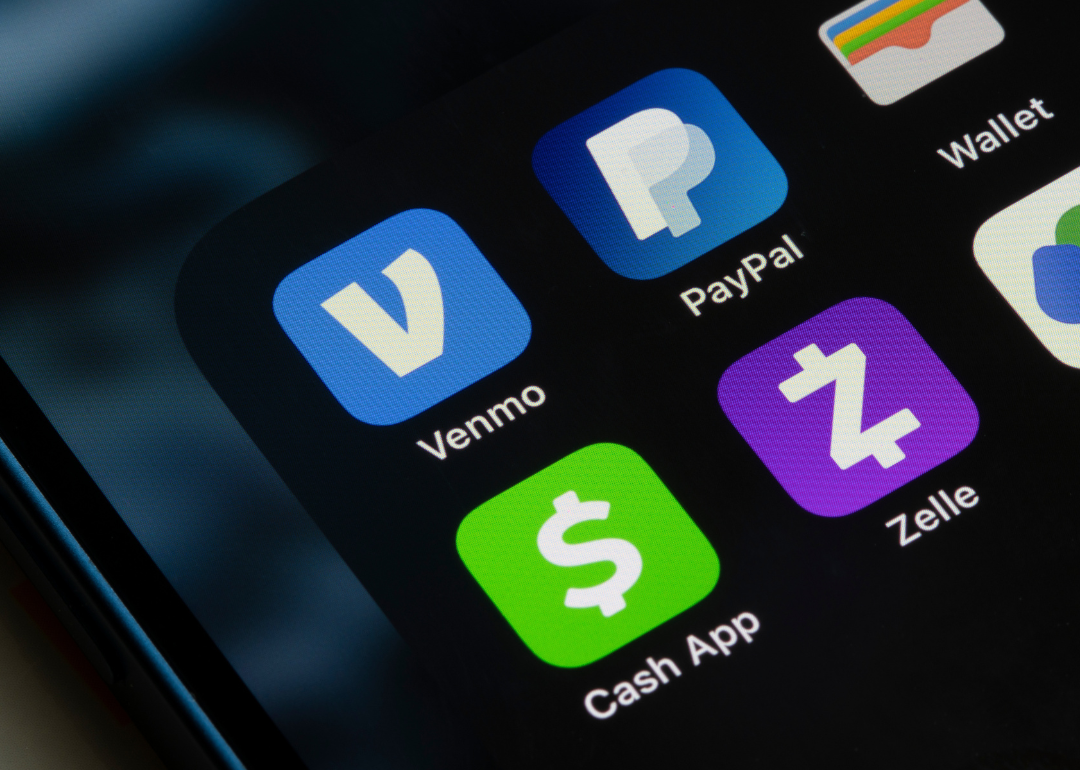
Bottom Image // Shutterstock
How the internet has changed the way we transfer money
Two people use their phones to send and receive money.
The Internet has changed the way people manage their money. Online banking was a huge success, and the latest innovation has been to send and receive money from anywhere in the world instantly.
Uniqode has compiled a list of ways the internet has changed the way money changes hands. Although hard money, in various forms, has existed for more than 5,000 years—and before barter—most money today exists electronically. This was even before the COVID-19 pandemic encouraged many people to find ways to send and receive money without leaving their homes. And those who came out often wanted to avoid spending money—and the germs that might be in it.
By the end of 2020, nearly half of Americans used a mobile wallet, which allows contactless digital payments. In 2022, more than 4 out of 5 American adults will own a cell phone and use it as a regular companion.
Electronic payment methods such as Venmo, Zelle, Apple Pay, Google Pay, cryptocurrency, e-wallets, and others continue to gain popularity.
By 2030, the number of dollars exchanged for non-cash transactions will nearly double in the US and Canada, and nearly triple globally, according to an analysis by financial services firm PwC.
![]()

SOPA Images // Getty Images
Fast transfer
The FedNow Service icon as displayed on the smartphone screen.
It has never been easier or faster to send money around the world. Gone are the days of standing in line at the bank to deposit a paper check and waiting for money to be processed and added to your account.
The World Bank reports that two-thirds of adults around the world engage in online transactions, which are often faster and more secure than money exchanges.
In the US, sending money electronically from one bank to another can take several business days—or cost a wire. However, several peer-to-peer services, including Zelle and Venmo, allow people to transfer money directly to and from each other’s bank accounts in minutes—or sometimes seconds.
And in 2023, the Federal Reserve launched its own instant transaction service called the FedNow Service. Zelle made it easy to transfer money using QR codes. One can scan the QR Code to automatically fill in the recipient’s Zelle details to send money.

letter press // Shutterstock
Simplicity
A person is holding a phone with a mobile banking application.
Before the Internet, when people wanted to send someone money, they had to meet in person to exchange money or send a paper check through the mail, which took time to arrive and additional time before the money was in the recipient’s account.
Founded in 1998, PayPal was among the first companies to seek to transform the time-consuming and sometimes difficult process into electronic transactions.
It ushered in the internet banking revolution that now sees almost every bank have its own software, many electronic payment services, and billions of people around the world exchanging money electronically.
Consumers report that access to fraud alerts, credit checks, and daily bank statements has helped them become more aware and worry less about their finances.
Although QR code payments are not recognized as cash, credit, check, or wire, they are becoming increasingly popular.

Tada Images /// Shutterstock
Different providers
Venmo, PayPal, Cash App, and Zelle app icons as seen on iPhone.
Whether you’re a small business owner who keeps track of customer invoices, splits checks between colleagues, pays a babysitter, or sends money to family or friends outside the US, there’s an app for it.
Venmo, Paypal, Zelle, and Cash App are some of the popular apps that Americans use to send money through their phones. They like to have different jobs. Venmo is often used to send money between friends, save money in the app, and share business information on feeds like social media. Cash App can be used to invest in stocks and cryptocurrency. Zelle transfers money directly between bank accounts. PayPal, which owns Venmo, also has its own payment software, which includes the option to pay in installments.

Bankoo // Shutterstock
Only changes
An LED board that shows the exchange rate of different currencies.
When people travel abroad or send money to people in other countries, modern technology has made life easier. In the past, banks and other service companies published regular lists of exchange rates, which often included large sums of money to cover exchange rates and fees.
But now, when converting, for example, dollars to euros for people from the US to Europe, many electronic payment programs, websites, and financial institutions convert the currency immediately. Knowing in real-time how much money they spend in certain areas can help travelers and businesses plan, budget, and spend more effectively.

nimon // Shutterstock
Out of money
A cashier is putting money into their register.
Four in 10 Americans did not spend money in a typical week last year, according to a 2022 Pew Research Center survey. Many said they don’t even have emergency funds, preferring to rely on digital or electronic payment methods instead.
High-income earners were generally less concerned about carrying cash than low-income earners, according to a Pew study. Using cash can avoid paying off debt or paying interest on purchases. And research shows that when people pay with cash, they’re less likely to make random purchases.
However, if money is lost or destroyed, it is impossible to replace it. Many online banks offer protection to customers against fraud charges. With that security, convenience, and little social interaction during a pandemic, cash may have been king in the past, but it’s quickly being replaced by electronic transactions.
This article first appeared on Uniqode and was created and
distributed in partnership with Stacker Studio.
#internet #changed #send #money #KTVZ